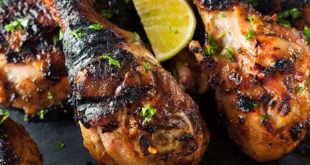What’s in the Oil?
Fried foods are the well-known rogue of the food industry, and with websites like Live Better America, consumers are becoming more aware of what’s in their food – and they’re making the choice to eat healthier.
Yet, it’s hard to stick to any diet when faced with killer tasting fries next to a well-made hamburger, and, oh, those mouthwatering fried appetizer plates of fried mushrooms, pickles and jalapeno poppers.
But there’s good news here, because those same sites that promote healthy living, are also helping consumers learn about healthy frying. By choosing the right fried oil and ensuring the best oil management practices, you can still deliver healthier fried food options without losing the taste.
Wait, let’s start with oil management, what is that?
Simply put, oil management is the art (and science) of getting the most out of your oil. It consists of choosing the right oil, understanding how oil is broken down, having a fryer with a built-in filtration system (and that recovers temperature quickly), and regularly testing oil quality.
Oil management is one of the greatest resources for any restaurant using a commercial fryer, because the frying oil alone is one of the biggest cost consumptions when it comes to frying; meaning, prolonging the life of the oil saves your restaurant money, $$$. And, making sure the oil is of good quality makes the food taste better, while still offering a healthier alternative.
Now, let’s talk healthy oils!
My grandparents use to cook the best fried chicken, in lard of course, and although mouth-watering and scrumptious, it was also artery clogging. Yet, with advances towards improving oil quality, especially in restaurants, that same fried chicken recipe can still be served-up without worrying about such adverse health concerns.
Some of the most commonly used healthy oils are high oleic canola and low linolenic soybean oils, which have the highest stability and nutrition value of other commonly used commercial cooking oils. Yes, they come with a much higher price tag than what you may be spending on traditional oils, but with good oil management practices, these oils actually last longer, which is where the money saving factor comes in. These oil types also come in shortening form, which is perfect for cookies, muffins and other sweets.
In comparison, partially hydrogenated oils may have a lower price tag and higher stability, but they also offer next to no nutritional value. Yet, unfortunately, there are a lot of restaurant owners that simply don’t care about oil quality, because they feel that they either loose flavor, or pay too much for the oil.
Like I mentioned in the beginning, today’s consumers are becoming savvier when it comes to the foods they eat, and they want it healthy – even when it’s fried. So, you have to ask yourself, if your restaurant isn’t making the switch to healthier oils, is it worth the loss in profit?
 Corner Booth Blog | TundraFMP Restaurant Supply, News & Equipment Blog
Corner Booth Blog | TundraFMP Restaurant Supply, News & Equipment Blog





This is great—I remember working in a not-very-healthy restaurant during college and every night I had to point the hot oil that was coming out of a hose at the sides of the vat to wash off gunk that had accumulated around the edges during the day. That was a low point, wielding a hot-oil hose. And looking back, that was some dang unhealthy oil. So my relationship with oil vats is sort of fraught, which leads me to a question: have you seen a restaurant do a good job marketing its better oil? It’s such a tricky topic—essentially bringing up a perceived negative in order to make it somewhat more positive. Or maybe totally positive. Still, it’s hard to “market” your better oil, isn’t it? Can you think of success stories in marketing better oil?
I didn’t find any restaurants marketing their healthy oils, per-se, but I did find a slew of information from bloggers and authors that are writing about those healthy (and not so healthy) restaurants, http://bit.ly/healthy-oils. These writers are finding their information from restaurants posting their nutritional facts – which is pretty common for franchise restaurants.
I can say, that I would expect an increase in restaurants needing to post nutritional information so that consumers can see it (especially since our society is becoming more and more health conscious). I would also expect to see an increase in the number of states and cities requiring restaurants to use healthy oils – laws to ban fats have already been passed in California, New York and Chicago (as well as many others, http://www.bantransfats.com/).
So, would marketing that a restaurant makes healthy oil choices be a good idea?
I think the bigger question is, what are consumers going to think when they find out that their favorite restaurant ISN’T using healthy oils?
Hi Kasy,
Thanks so much for posting such well-written, clear information. I was a little surprised that extra virgin olive oil did not make the grade as it’s produced without chemical processing and contains a host of antioxidants (polyphenols).
As a health-conscious consumer, I appreciate any effort or policy that restaurants implement that promotes the health of their patrons. I don’t see why servers can’t mention that they use a particular healthy oil when customers order a fried dish. At the very least, they may feel less guilt about their indulgence. 🙂
EVOO isn’t typically used for deep fried foods because of the high-price point and low-smoke point (410ºF). And for those that have tried using EVOO to fry up foods, they reported a totally different, almost overwhelming, flavor. However, I did see that a lot of restaurants still prefer to use EVOO for smaller dishes.
Hi Kasy,
Thanks for the explanation. At home, we tend to use EVOO the vast majoirty of times, but we’ll definitely try the other oils you mention – just to see the change in flavor.